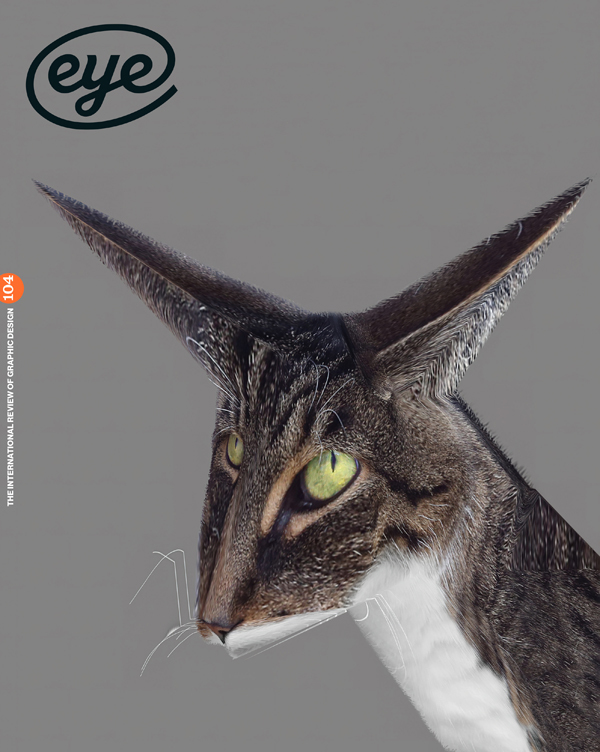Spring 2023
This is a column
Design that tells the story of its own making harks back to conceptual art of the 1960s.
By Rick Poynor
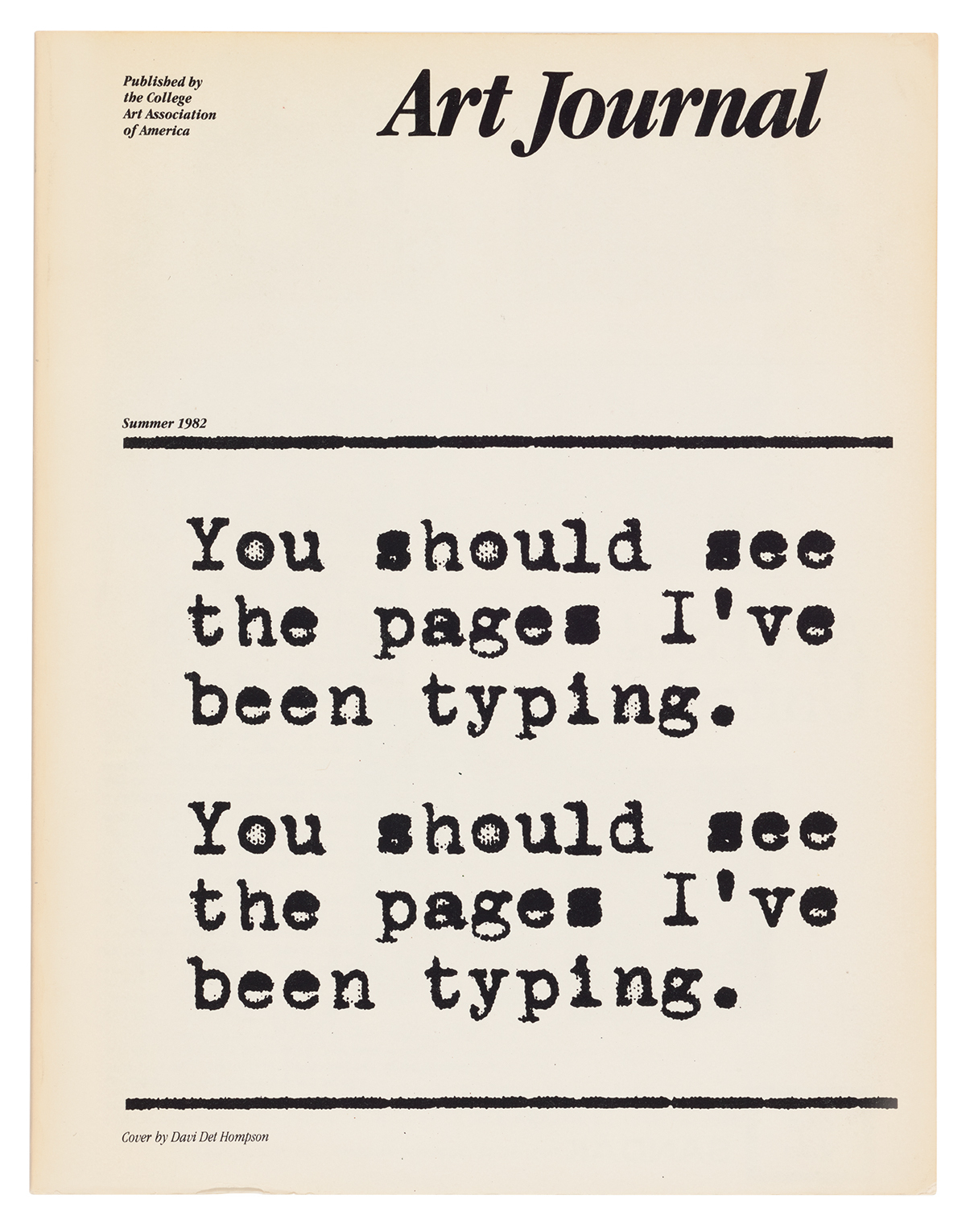
A recent volume of collected essays by the American design critic Kenneth FitzGerald pays homage to Hipgnosis’s famous ‘This is a RECORD COVER’ conceptual design for XTC’s second album,Go 2 (1978). A long, faux-confessional text about the manipulative process of designing a cover unwinds across both sides of the eccentric British post-punk band’s 12-inch sleeve, with lots of emphatic capital letters: ‘This writing is trying to pull you in much like an eye-catching picture. It is designed to get you to READ IT. This is called luring the VICTIM, and you are the VICTIM.’ And oh, how we enjoyed our part as the victim (or record-buyer). It would be a perfectly executed wind-up if there weren’t some words missing in one of the sentences halfway down the back. Nevertheless, Go 2 has become a canonical design of its era.
FitzGerald has long been a fan of British new wave music. For the cover flaps of his book (Process Music, see ‘The narrator is present’), which fold outwards, concealing much of the cover (but what is a cover?), he replays and riffs on the idea. The white-out-of-black, script-like text becomes an extended rumination on Go 2’s graphic tactics – ‘It’s both subversion and celebration of design: we can have it all!’ The device of insistently literal, sort-of-ironic naming (‘This is a …’), followed by a paragraph of description, is then applied to every part of the paperback – title page, front matter, contents page, and each successive section – in place of the usual editorial and typographic conventions. It would be hard to imagine how any designer could take this concept any further. FitzGerald has succeeded in imbuing a picture-less sequence of critical texts with that all-important, value-adding ‘object quality’ demanded by contemporary buyers.
Flash and Filigree & The Magic Christian, 1965. Design: John Sewell.
Top. Art Journal, Summer 1982. Design: Davi Det Hompson.
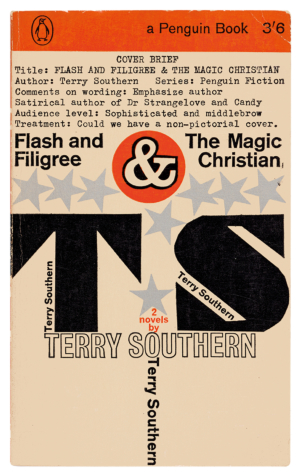
I know of only one precursor to the Go 2 concept, and it predates Hipgnosis’s design by more than a decade. In his Penguin cover for two short novels by the American satirical writer Terry Southern, Flash and Filigree & The Magic Christian, John Sewell (1926-81) audaciously places the publisher’s seven-line brief on the front cover above the ostensible design. This text is in the monospaced typewriter typeface, Elite, subsequently used on Go 2, which may be no more than a coincidence since it was standard at the time. The audience – or is it two audiences? – is described as ‘sophisticated and middlebrow’. The brief’s two main requirements are to emphasise the author and to provide a non-pictorial design.
Sewell, who was both designer and image-maker, with an inventively decorative, sometimes abstract illustrative style, constructs a kind of display stand for the author’s huge initials from his name repeated four times. No other Penguin before or after this date (1965) foregrounds the commercial mechanics of cover design and book promotion in this manner. The cover is a graphic haiku next to Go 2’s essayistic narrative, and the design equivalent, like Go 2 later, of ‘breaking the fourth wall’ in the theatre – acknowledging and directly addressing the audience.
In its original political form, this was the so-called ‘alienation effect’ devised by the Marxist playwright Bertolt Brecht to compel audiences to understand that they were watching a construct and make them think about this spectacle. Go 2 affects to be producing the same kind of revelatory effect: ‘if you’ve read this far then you’re TRICKED but you wouldn’t have known this unless you’d read this far.’
I don’t recall in 1978 feeling that anything had been revealed that I hadn’t already grasped, but I was entertained, as we still are, by the conceit.
Designer, November 1986. Art Editor: Paul Harpin.
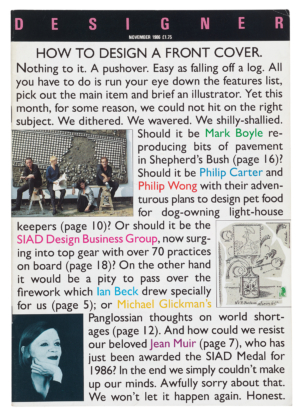
The idea of the self-critiquing cover design was later applied a couple of times by British design magazines. In 1986, Alastair Best, editor of Designer (long defunct), composed a jokily apologetic text about not knowing what to put on the cover as a cunning way of putting more things on the cover. In 2004, to illustrate a survey about work placements, Mark Errington, who was doing a placement at Browns, was given the career-boosting opportunity to design Creative Review’s cover. The story of how he arrived at this point becomes the design. The austerity of the background, here red rather than black, makes it work.
Creative Review, March 2004. Cover: Mark Errington. Art director: Nathan Gale.
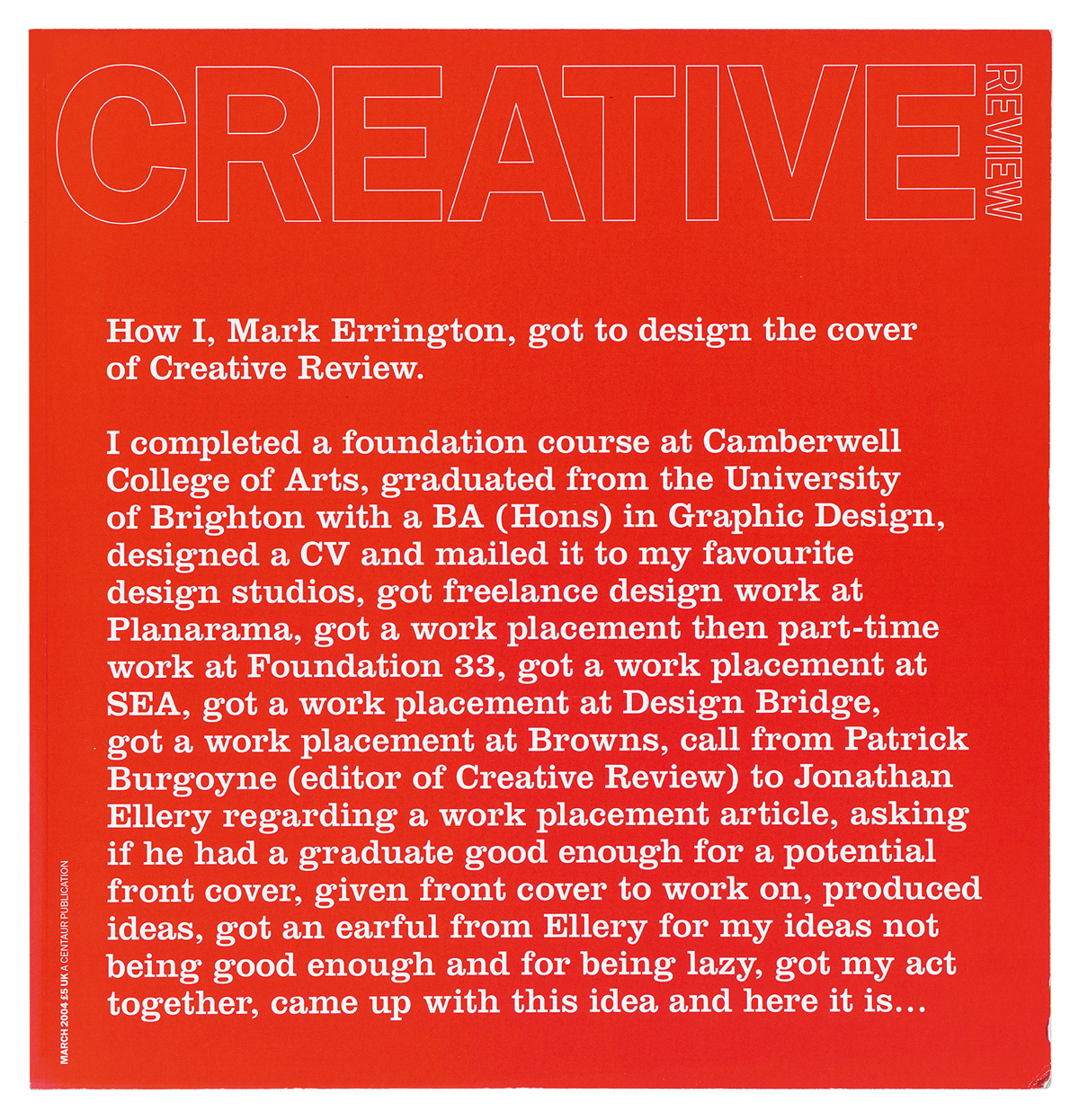
The best example I have found, post-XTC, benefits from an additional measure of ambiguity. Go 2’s visual rigour links it to the text-based conceptual art of its day and FitzGerald’s cover has a similarly exacting air. Arriving four years after Go 2, an issue of Art Journal devoted to ‘Words and Wordworks’ takes textual self-reflexiveness a step further by printing the same cover line – ‘You should see the pages I’ve been typing ’ – twice between scratchy rules. Davi Det Hompson’s blown-up, ink-splodged letters clatter with resonance. The Fluxus artist and concrete poet’s work can be found inside the issue. I rarely say it, but here less is more.
Rick Poynor, writer, Eye founder, professor of design and visual culture, University of Reading
First published in Eye no. 104 vol. 26, 2023
Eye is the world’s most beautiful and collectable graphic design journal, published for professional designers, students and anyone interested in critical, informed writing about graphic design and visual culture. It is available from all good design bookshops and online at the Eye shop, where you can buy subscriptions and single issues.

